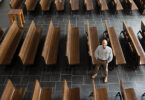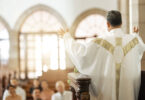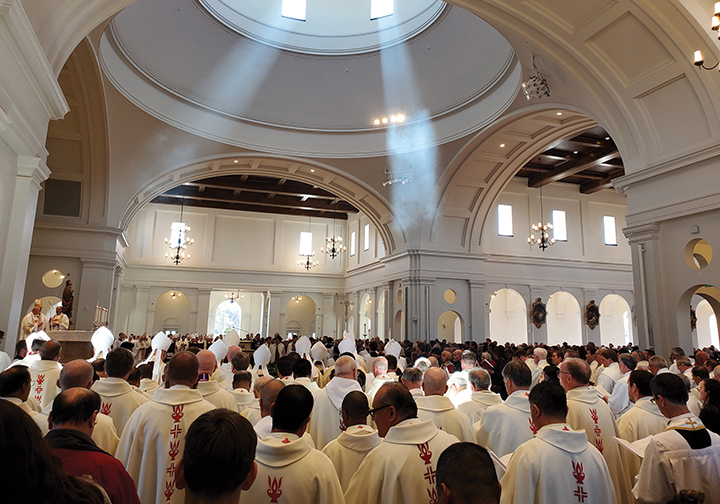
by Marc and Julie Anderson
mjanderson@theleaven.org
OKLAHOMA CITY – “The shepherd cannot run at the first sign of danger.”
That is probably the most famous line ever written by Blessed Stanley Francis Rother, a diocesan priest from Okarche, Oklahoma, who in September 2017 became the United States’ first native-born martyr to be recognized by the Catholic Church.
He is also the first diocesan priest from the United States to be beatified. Beatification is the final step before becoming a saint.
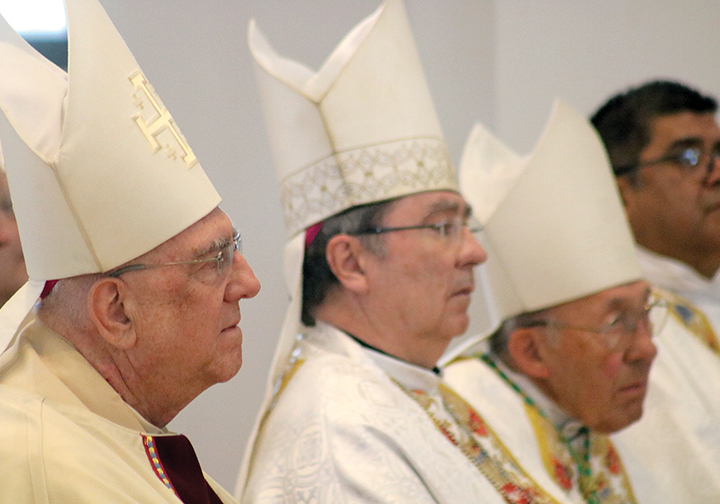
For the past several years, thousands of pilgrims have journeyed to Oklahoma to pray at his tomb at Holy Trinity Cemetery in Okarche. But as of Feb. 17, pilgrims have a new place at which to pray and seek Blessed Rother’s intercession.
The Archdiocese of Oklahoma City welcomed guests to the Mass for the dedication of the Blessed Stanley Rother Shrine located in the southern part of the city.
The Mass served as the final event in a weeklong celebration known as Dedication Week. It began with vespers and an all-night vigil and included, among other events, the dedication of the shrine’s chapel in which Blessed Rother’s body lies entombed.
The campus, once a golf course, boasts a 2,000-seat Spanish Colonial-style church known as Sacred Heart, which serves not only as the home of the Blessed Rother Shrine, but also the church for the parishes of Sacred Heart and Holy Angels, which minister to the archdiocese’s growing Hispanic population.
It is the largest Catholic church in Oklahoma. The shrine also includes a pilgrim center with a gift shop and museum, where visitors can learn about Blessed Rother’s life and see some of his personal items, including his ordination chalice and rosary.
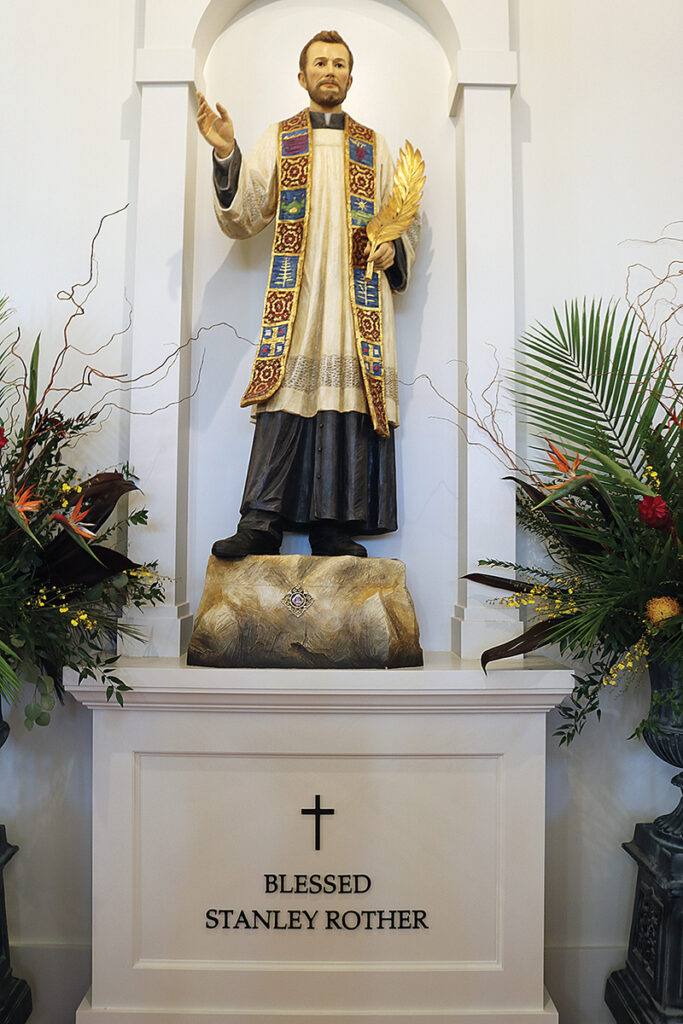
In his homily, Archbishop Paul S. Coakley of Oklahoma City acknowledged and welcomed all of those in attendance, including Archbishop Christophe Pierre, the apostolic nuncio to the United States, and Archbishop Emeritus Eusebius Beltran “whose vision and whose conviction” led to the opening of the cause of Blessed Rother. He also welcomed Archbishop Gonzollo Villa Vasquez, SJ, who hails from the Archdiocese of Guatemala City but who served as the bishop of Solola-Chimaltenango, the diocese in which Blessed Rother served as a missionary for 13 years.
The day, Archbishop Coakley said, was indeed a cause for celebration.
“It’s not about the beautiful art, architecture that speaks so eloquently to God’s goodness and mercy and beauty. We gather here to honor the God who created all of this and the God who is glorified in his saints. We honor Blessed Stanley because we are giving glory to God,” the archbishop said.
“The life of each and every saint in the history of the church manifests something of the perfection of Christ — reveals God’s beauty, God’s truth and God’s goodness in unique ways,” he added.
The archbishop also encouraged everyone to seek the martyr’s intercession.
“Ask with confidence. Ask with boldness,” he said. “If you need a special favor, if you need a miracle, remember so does Blessed Stanley Rother. Ask often. What will it take for Blessed Stanley to become Saint Stanley?”
Well, it’s going to take a miracle,” the archbishop said to much laughter, noting the final step in the process is a miracle attributed to his intercession.
Today’s Catholics, he continued, are not necessarily living in a world open to the Christian message, but in “an apostolic age” much like “the hostile pagan world into which the apostles were sent after Pentecost.”
One person the archbishop said who can offer us an example of living heroically in this age is Blessed Rother.
“When his life was threatened and he knew that death was imminent for him, he wrote back home to Oklahoma in his Christmas letter in 1980, famously declaring, ‘The shepherd cannot run at the first sign of danger,’ and he chose to remain.”
In conclusion, the archbishop said, “The world into which we are sent to go make disciples needs committed priests. It needs holy marriages and families. It needs dedicated lay leaders in their professions, the trades, in business and the arts and in public service to renew the culture with the light of the Gospel, the fragrance of Christ and the attractive beauty of holiness. We need faithful witnesses and fervent missionary disciples.
“Let us learn, let us study the example of our brother, Blessed Stanley Rother, and confidently seek his intercession that we will be found faithful just as he was faithful and ultimately be welcomed as he was welcomed into the company of the saints.”
For more information about Blessed Rother and the shrine, including hours of operation and Mass times, visit the website at: rothershrine.org.




